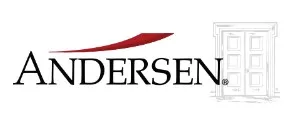- in United States
- within International Law and Technology topic(s)
- with readers working within the Automotive industries
Africa's critical minerals are powering a new wave of cross-border M&A activity—especially in copper, cobalt and lithium.
As the global energy transition gains traction and long-term demand for electric vehicles (EVs) continues to expand, the world is turning its attention to Africa's mineral wealth. While EV sales growth has recently slowed in some markets, global policy mandates, automaker commitments and clean energy targets continue to drive strong medium- to long-term demand for battery minerals. From the DRC to Zambia to Madagascar, deals are intensifying as nations and investors vie for strategic control over these essential resources.
Why Africa—and why now?
Africa hosts some of the world's largest untapped reserves of battery minerals. The Democratic Republic of Congo produces around 70% of global cobalt supply, Zambia remains a copper stronghold, and Madagascar's nickel and rare earth assets are drawing increased attention. While South Africa is not a major producer of these specific minerals, it plays a pivotal role in the regional M&A landscape—serving as a financial, legal and logistical base for transactions across the continent. South African mining houses, private equity funds, and infrastructure players are increasingly involved in cross-border acquisitions, project finance and offtake agreements tied to battery mineral assets. This positions South Africa not only as a launchpad for capital and expertise, but also as a consolidator of strategic influence in the energy transition supply chain.
This renewed interest is driven by:
- National security requirements to lock-in supply from "tied mines". State owned enterprises, and those with strong ties to the state – for example the Kingdom of Saudi Arabia, China and India, and increasingly the US see the need for stable supply somewhat insulated from the spot market and supply squeeze;
- Global decarbonisation mandates and energy transition targets;
- Rising EV production from the US, EU and China, all of which require long-term mineral security;
- Geopolitical hedging, with Western firms seeking to diversify supply away from Chinese-dominated markets;
- Policy reforms in host countries that support private sector participation and local beneficiation.
Lessons from the field: Structuring cross-border mineral deals
In one of my recent mandates, I led multiple copper and cobalt asset acquisitions across Africa, managing approximately $4.5 billion in transactions for a group of investors based in the US, China, and Central Asia. Each transaction highlighted the complexity—and the immense opportunity—of cross-border mineral investment on the continent.
Three key takeaways emerged:
- Regulatory alignment and a deep understanding and respect for local law and business practice, and appropriate engagement with key decision makers is fundamental. In markets such as the DRC and Zambia, understanding the interplay between mining, investment and currency control laws is essential. Delays and risk often arise not from the asset itself, but from the regulatory process surrounding it.
- Structure follows strategy. More risk averse investors need to consider joint ventures, streaming arrangements, off-take agreements and ESG-linked funding structures early on. In multi-jurisdictional deals, the wrong structure can erode returns or expose the transaction to tax inefficiencies and governance challenges.
Local partnership is not optional. Governments and communities increasingly expect value-sharing—whether through equity, employment or infrastructure commitments. Long-term success depends on alignment with host country development goals and transparent engagement.
An understanding of access to infrastructure is imperative – electricity supply agreements, access to logistic (road and rail) as well as access and offtake of water resources (often shared with host communities) and environmental permitting is key. Anti-Bribery and Corruption (ABAC) considerations as well as sanction compliance are a given. Structures and solutions providing investors with maximum reputational and commercial protection against these risks require thought and careful drafting.
Outlook: Consolidation and competition ahead
We are already seeing the contours of a mineral M&A boom:
- US-backed initiatives like the Minerals Security Partnership are looking to counterbalance China's established presence.
- Gulf investors are making strategic plays in African lithium and copper to secure supply for green infrastructure.
- African governments are renegotiating legacy mining agreements to retain more local value—creating both risk and opportunity for buyers.
As the competition for critical minerals intensifies, Africa will remain a focal point for strategic investment. Unlocking these opportunities requires more than just capital—it calls for sophisticated deal structuring, deep local insight and a firm grasp of the geopolitical and regulatory dynamics shaping the continent. For investors and corporates alike, long-term success will depend on their ability to align commercial ambition with on-the-ground realities.
The content of this article is intended to provide a general guide to the subject matter. Specialist advice should be sought about your specific circumstances.


